Material Category
Optical Glass
Optical glass is known for its high transmission, low dispersion, and homogenous refraction indices. These properties result from the continuous melting process and subsequent finishing methods used to create optical glass.
This material is categorized into either flint glass or crown glass. Flint glass has an Abbe number < 55 and generally < 50. Flint glass is denser due to the inclusion of various metal oxides and exhibits strong chromatic dispersion. Crown glass has an Abbe number> 50 and generally > 55. Crown glass is typically less dense resulting from higher usage of alkali metals and exhibits low chromatic dispersion.
OPTICAL GLASS OVERVIEW
Optical glass is mainly produced in a continuous melting process. Optical glasses acquire their properties through their chemical composition, melting process, and finishing methods.
There are two common optical glasses: flint glass and crown glass. The difference between the two lies in their index of refraction; however, both are known for their Abbe numbers generally under 60.
The table below shows comparable materials from different manufacturers.
| SCHOTT | OHARA | HIKARI | CDGM | ||||
|---|---|---|---|---|---|---|---|
| Type | Code | Type | Code | Type | Code | Type | Code |
| N-BK7 | 517642 | S-BSL7 | 516641 | J-BK7 | 517641 | H-K9L | 517642 |
| - | - | S-TIM8 | 596392 | J-F8 | 596392 | H-QF14 | 596392 |
| - | - | S-TIM5 | 603380 | J-F5 | 603380 | H-F1 | 603380 |
| N-SK2 | 607567 | S-BSM2 | 607568 | J-SK2 | J-SK2 | H-ZK50 | 607567 |
| N-F2 | N-F2 | S-TIM2 | 620363 | J-F2 | 620364 | H-F4 | 620364 |
| N-SF2 | 648338 | S-TIM22 | 648338 | J-SF2 | 648337 | H-ZF1 | 648338 |
| N-SF5 | 673323 | S-TIM25 | 673321 | J-SF5 | 673322 | H-ZF2 | 673322 |
| N-SF8 | 689313 | S-TIM28 | 688311 | J-SF8 | 689312 | H-ZF10 | 689312 |
| N-SF1 | 717296 | S-TIH1 | 717295 | J-SF1 | 717296 | H-ZF3 | 717295 |
| N-SF10 | 728285 | S-TIH10 | 728285 | J-SF10 | 728284 | H-ZF4 | 728283 |
| N-SF4 | 755274 | S-TIH4 | 755275 | J-SF4 | 755276 | H-ZF6 | 755275 |
| N-SF11 | 785257 | S-TIH11 | 785257 | J-SF11 | 785256 | H-ZF13 | 785257 |
| N-SF6 | 805254 | S-TIH6 | 805254 | J-SF6 | 805255 | H-ZF7LA | 805255 |
| N-SF57 | 847238 | S-TIH53 | 847238 | J-SF03 | 847238 | H-ZF52A | 847238 |
AVAILABLE MATERIALS
Based upon customer demand, Sydor Optics offers Optical Glass made from the following substrate materials. Of course, if you don’t see a material you need, please contact a Sales Engineer, who will gladly discuss additional options that may be available.
Optical Glass
Optical glass is known for its high transmission, low dispersion, and homogenous refraction indices. These properties result from the continuous melting process and subsequent finishing methods used to create optical glass. This material is categorized into either flint glass or crown glass. Flint glass has an Abbe number < 55 and generally < 50. Flint glass is denser due to the inclusion of various metal oxides and exhibits strong chromatic dispersion. Crown glass has an Abbe number> 50 and generally > 55. Crown glass is typically less dense resulting from higher usage of alkali metals and exhibits low chromatic dispersion.- Hoya BSC7
- Ohara S-BSL 7
- Ohara S-TIH1
- Ohara S-TIH10
- Ohara S-TIH11
- Ohara S-TIH4
- Ohara S-TIH6
- Ohara S-TIM22
- Ohara S-TIM25
- Ohara S-TIM28
- SCHOTT BK7G18
- SCHOTT N-BK7
- SCHOTT N-BK7HT
- SCHOTT N-SF1
- SCHOTT N-SF10
- SCHOTT N-SF11
- SCHOTT N-SF2
- SCHOTT N-SF4
- SCHOTT N-SF5
- SCHOTT N-SF6
- SCHOTT N-SF8
Popular Materials
OPTICAL GLASS PROPERTIES
Principle Uses of Optical Glass
Optical glass is perhaps the most common type of material used in optical applications. It can be used in a variety of applications including:
- Precision lenses
- Pressure sensors
- Viewing windows
- Instrument windows
- Laser systems
- Beam displacement
Chemical Properties
Optical glass can include additives such as boric oxide (that make borosilicate glasses) and sometimes zinc oxide, phosphorus pentoxide, fluorite, and barium oxide.
Optical glass is generally water resistant, typically preventing staining in a humidity of 80% at 50 °C, and optical glasses are usually resistant to alkalis and other environmental factors.
Mechanical Properties
The mechanical properties of optical glass make it an excellent choice for numerous optical applications. The density of optical glass varies from 2.39 g/cm³ to 6.19 g/cm³.
Thermal Properties
The thermal properties of optical glass determine how the glass reacts in varying temperatures. The average coefficient of thermal expansion is between 7.00 and 9.00 x 10–6 /°C, which is generally higher than materials such as fused silica.
Homogeneity
The global refractive index homogeneity of optical glass is better than 40 x 10–6. Most machined optical glasses can be delivered in homogeneities:
ISO 10110 part 4 homogeneity class 2 or better with a maximum variation of refractive index according ISO 10110 part 4 of ± 5 ∙ 10–6 and a maximum variation of the refractive index according to ISO 12123 and SCHOTT optical glass catalog of 10 ∙ 10–6.
Optical Properties
The two most prominent optical properties for optical glass are the index of refraction and the Abbe number.
Index of Refraction
Light will travel through materials with a lower index of refraction quicker than materials with a high index of refraction because the higher refraction bends light more.
Flint glasses have a high index of refraction whereas crown glasses have a generally low index of refraction, so they are often used together in application because of their conflicting properties.
Abbe Number
The Abbe number quantifies the amount of dispersion in a given spectral range. For example, a low Abbe number gives higher color dispersion while a high Abbe number reduces color aberration.
Optical glass has Abbe numbers ranging from 24 to 64.







